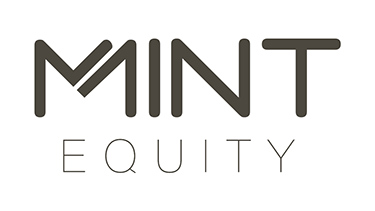There something very comforting about having your mortgage with one of the big banks. They’re big for a reason right? Great service, low rates, safe, secure and convenient. They hold a great tradition of banking in Australia.
Many of us grew up with Commonwealth Dollarmite accounts or had the green plastic money box in the shape of StGeorge’s dragon sitting in our bedrooms. Their impressive marketing and advertising wins us over and we’re convinced they are the best choice for financing the largest purchase of our lives.
As mortgage brokers, we have access to over 40 lenders and 100’s of product options, but it’s fascinating to see how many people pre-select their lender from the big 4, Commonwealth Bank, Westpac, ANZ and NAB before reviewing other options.
So what is it about the big 4 banks that makes them the first choice for many? Is it purely because they have more brand awareness and therefore at the forefront of borrower’s minds. Or is it because other lenders are unknown and therefore deemed unsecure.
What exactly are ‘2nd tier lenders’?
A 2nd tier lender, also known as a non-bank lender, is a lender who doesn’t hold a banking licence. They usually come in the form of a building society or credit union. While the absence of a banking licence might seem scary, it just means they source their own wholesale funding from other sources. Often non-bank lenders secure their funds from the big banks. For example, Rams is the classic example of a non bank lender that isn’t really a non bank lender being 100% owned and funded by Westpac.
Banks, building societies and credit unions are all classified as an ADI (Authorised Deposit-taking Institution), meaning a body corporate is authorised under section 9 of the Banking Act 1959, to carry on banking business in Australia.
Big 4 banks interest rates
The big 4 banks have been in the limelight recently largely due the big banks ignoring the RBA’s cash rate decisions and increase interest rates regardless. Shareholders are always happy with the increase in profit but the many customers assumed that the RBA’s decisions would flow across all the big banks. Reality is, when you have the largest market share you can play by your own rules when it comes to interest rates, even if the RBA doesn’t increase or decrease the cash rate.
APRA, APRA… APRA
A negative of being one of the big 4 is APRA (Australian Prudential Regulation Authority). APRA heavily scrutinises the lending practices of the big four as collectively they represent over 80% of the market share in home loans.
In July 2018, APRA restricted the ratio of investment loans that the big banks could write. This triggered an increase of interest rates for investment loans to try and slow investor growth. Some of the 2nd tier lenders have been effected too but generally have a little more flexibility.
APRA’s control means that we’re seeing policy and bank appetites changing on a more frequent basis, particularly with the big 4. It means mortgage brokers need to keep up with more and more policy changes to ensure customers are offered the right options. Consumers going direct to banks will need to allocate more time to their search as not every major has the same products as they did six or even one month ago.
Which major banks have the highest total mortgage loans?
Top 5 banks in Australia
The list below is based on the market capitalisation of the bank.
CBA ($197.17 Billion)
NAB ($105.36 Billion)
Westpac ($94.28 Billion)
ANZ ($88.12 Billion)
Macquarie Bank ($75.91 Billion)
How are 2nd tier home loan lenders different to the big banks?
No branches
The first thing you notice about the big 4 is that they have branches across Australia. A 2nd tier lender usually has few or no branches and provide online/telephone services as a replacement.
For home loans, this shouldn’t be a concern and particularly if using a mortgage broker as the broker manages the process from start to finish without needing to step foot inside a financial institution.
Niche products
2nd tier lenders are great if you’re a little outside of the box. The big banks have standard home loans covered but if your home loan needs a manual credit assessment rather than an automated process, then it’s likely a 2nd tier lender will offer better options.
That said, 2nd tier lenders are now becoming more efficient at dealing with the standard variety and are keeping interest rates low as a great alternative to the majors as they don’t have the huge overheads with the branch network as the big 4 have.
Limited transactional banking
We all like to have our finances in a neat and organised manner, and some 2nd tier lenders don’t offer transactional services which means many customers who have home loans with a 2nd tier lender will still have their transactional accounts with the majors.
Regardless of the size and scale of the lender you choose, today’s options are vast. You should select a lender that suits your needs and can provide the right finance options. If you’re not sure which lender is right for you, contact Mint Equity and we can take you through the options of both big banks and 2nd tier lenders.

